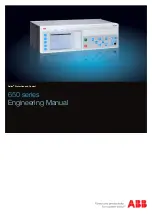
11
current” to set the “Start Date/Time” to the current UTC. Select the number of days (the
“Duration”) you want to collect data for: one or two days for LEO satellites, up to 4 or 5 days for
AO-40 and similar slow, deep-space satellites. Set the “Increment” to perhaps 1 min for LEO
satellites, 5 to 10 min for AO-40. Do not click “Only optically visible”, as that excludes
elevation data close to the horizon. Click “OK” when done to return to the “Satellite Pass Data”
screen.
Preparing satellite pass data using
InstantTrack
Again, you should refer to your
InstantTrack
manual for instructions. We include this
explanation to assist you in figuring out the process. We used Version
InstantTrack
V1.50 in
preparing this description.
From the Main Menu, press “3” (“Satellite Position Table (Ephemeris)”}. From the
Satellite Selection Menu, select and type the satellite number, followed by [enter] (E.g., for
example, if you see “51. AO-40”, enter “51” followed by [enter]. From the Satellite Position
Table, Parameter Entry screen, you see, “Starting at mm/dd/yy hh:mm:ss [03/21/2002
06:18:13 UTC]:__”, where the UTC time shown in square brackets is what your computer
believes is your current UTC time. If you want to start searching for pass data starting at this
time, simply press [enter], since that is the default time. Otherwise enter the date and time you
want.
A new screen appears, showing, “Time Increment in minutes [11.0]__”, where the
increment in square brackets is a default value suggested by InstantTrack.. This time interval
is longer for slow SATs like AO-40, and shorter for LEO SATs. Select the default by pressing
[enter], or type your own interval then press [enter].
The screen then lists a screen full of text lines, each with Times, Azimuth Angles,
Elevation Angles for the selected SAT pass, plus other data we don’t use. The cursor flashes
in the upper left of the screen. At this time, type “F” (for “Filename”), without an [enter]. This
brings up the “File or Printer” parameter entry screen. Ignore the printer suggestions, and
enter a file name, no more than 8 characters, followed by “.out”. For example, you might name
your file “E032002B.out”, where the “E” stands for Ephemeris (obviously), the next 6 digits are
today’s date, and “B” suggests this is the second ephemeris file you have saved today.
Choose your own scheme. Use of the “.out” suffix will ease the use of the file with the
AzElControl.exe
program in a moment. After entering the file name, hit [enter], and you will be
returned to the previous data screen. But now your new filename appears at the upper left of
the screen.
If the upcoming pass is not complete on this screen (i.e., if no dashed line appears
across the screen with the words “end of pass” in the middle), then hit [enter] once, or more,
until you see such an “end-of-pass” marker line. When you see this terminator line, you should
stop pressing [enter], unless you want to store data for more than one pass. (But there is a
limit to how much satellite pass data you can store at one time in the processor, so for now
limit it to a single pass.) Close this screen by typing “Q” (for “Quit”). Hit “Q” again to quit the
InstantTrack program. If you are running “InstantTrack using an MSDOS window under MS
Windows
, you will need to close this window by clicking on the “X” switch at the upper right
(for Windows 95).
Summary of Contents for Az-EL
Page 1: ...SatEL Az EL...


































